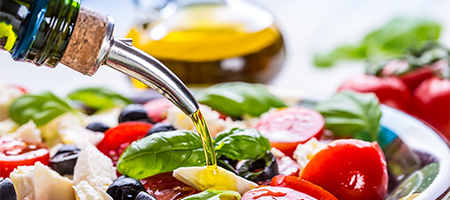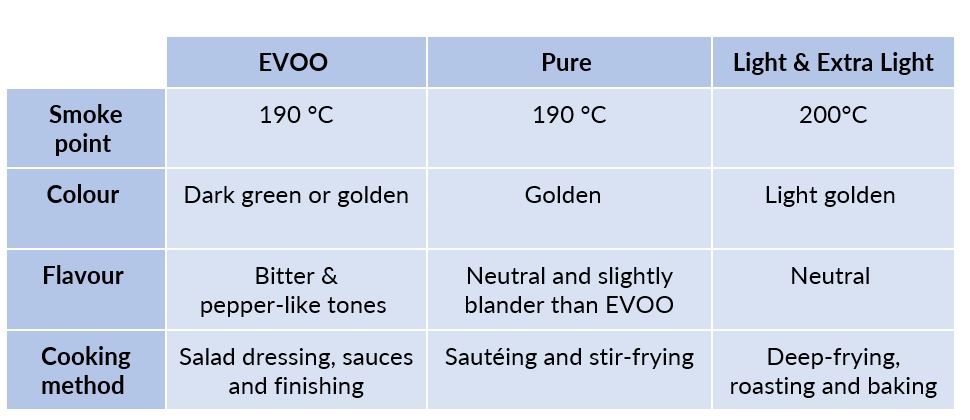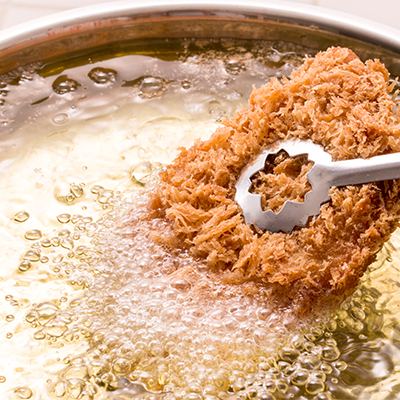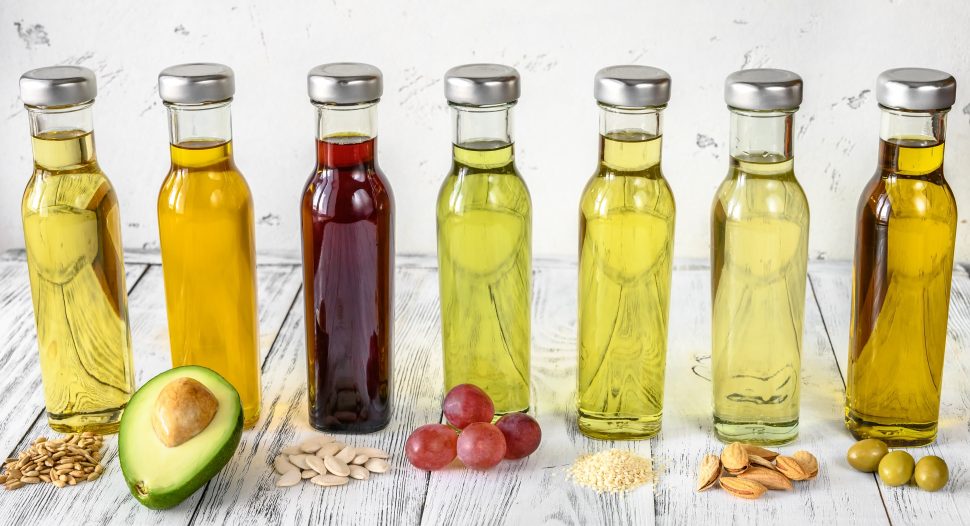From olive oil to grapeseed oil, there is a wide range of options in the supermarket aisles. And the list goes on!
Within one type such as olive oil, there are also variations such as extra virgin and even rich and fruity. Mind-boggling, isn’t it? It doesn’t have to be. Get well-oiled on your knowledge of these 3 types of cooking oils and how to use them in the kitchen!
What’s cooking?
Firstly, match your cooking oil to your cooking method. Different oils have different uses like deep-frying, sautéing, as well as drizzling on fresh salads. Each type of cooking oil has a smoke point and distinct flavour.
Don’t let it get smokin’ hot!
Have you ever put heated oil in a pan, forgot about it momentarily and turned back to find smoke wafting into your eyes? What you’ve witnessed is that oil’s smoke point, a temperature at which the oil breaks down, starts to smoke and results in awful-tasting scorched food.
Olive oil
Smoke point: 190°C – 200°C (moderate)
Now, let’s start with one of the most ubiquitous oils in the kitchen. Olive oil owes much of its popularity to its reputation as a healthy oil and also its multiple uses from salad dressings to sautéing. But do you know that different olive oils call for different uses?


Extra virgin
Extra virgin olive oil (EVOO) is probably what you would find most of the time. It’s also the most expensive type of olive oil because of its quality. EVOO is purely extracted by grinding and pressing olives, with no chemicals being used. There is no heat involved in the process, thus you often see the “cold-pressed” label on EVOO from some brands.
The olive flavour is the most distinct in EVOO , making it perfect as a salad dressing or for sauces and finishing so you can taste its flavours — like the Italians do! Due to its moderate smoke point and higher price point, it’s also not recommended to use this precious oil to deep fry or roast food.
Pure
Pure olive oil may sometimes be simply called “olive oil”. It’s obtained from either the second cold pressing or a chemical extraction of the leftover olive mash from the first pressing. The word ‘pure’ refers to no other non-olive oils being added.
Pure olive oil is blander than EVOO in terms of flavour profile and serves well as an all-purpose oil.
Light and extra light
Contrary to popular belief, light olive oil does not have a lower fat content. It actually refers to its lighter colour and neutral flavour. The neutral flavour in light olive oil is also not a bad thing as it can be great for baking. Compared to the deep green hue of EVOO, light olive oil has a golden yellow colour. A refined oil that is produced using heat, it has fewer nutrients. However, this also means it has a higher smoke point and longer shelf life!
Rice bran oil
Smoke point: 232°C (High)
Relatively common in Asian kitchens, rice bran oil is extracted from the husk of rice. It is trans-fat free and low in saturated fats. But what really sets it apart from other cooking oils is the presence of two unusual compounds — oryzanol and tocotrienols. Oryzanol has the ability to block the absorption of cholesterol into the body. Tocotrienols, on the other hand, are fat-soluble compounds that are converted into the heart-friendly antioxidant vitamin E.
Rice bran oil is a stable performer on the stove. Its high smoke point and mild flavour make it a good oil for high-temperature cooking methods such as deep-frying and stir-frying.

Grapeseed oil
Smoke point: 216°C (moderate-high)
Favoured by many restaurant chefs for its clean taste, grapeseed oil is a versatile daily cooking oil and a more affordable substitute than EVOO. It is pressed from the seeds of grapes and is a rich source of vitamin E and omega-6 fatty acids. Given that grape seeds can only yield a small amount of oil at a time, it is still pricier than other oils.
In the kitchen, grapeseed oil works well when used in vinaigrettes as it lets the flavours of other ingredients like herbs shine through. While it has a moderately high smoke point, it would be wise to keep this oil for medium-heat cooking such as sautéing, searing and grilling. Its clean, non-intrusive flavour also makes it a useful ingredient in baked goods.
In a nutshell (pun intended), keep these pointers in mind when choosing your cooking oil:
- Look for oils that contain less than 35% saturated fats and more than 50% unsaturated fats. Oils with “Healthier Choice” symbols are safe bets that take the guesswork out of oil shopping.
- Match the smoke point of the cooking oil to your cooking method. For example, high-temperature cooking methods like deep frying call for sunflower oil, rice bran oil and soybean oil, to name a few.
- Oil can deteriorate over time so store them properly in a cool, dry place away from direct sunlight!



